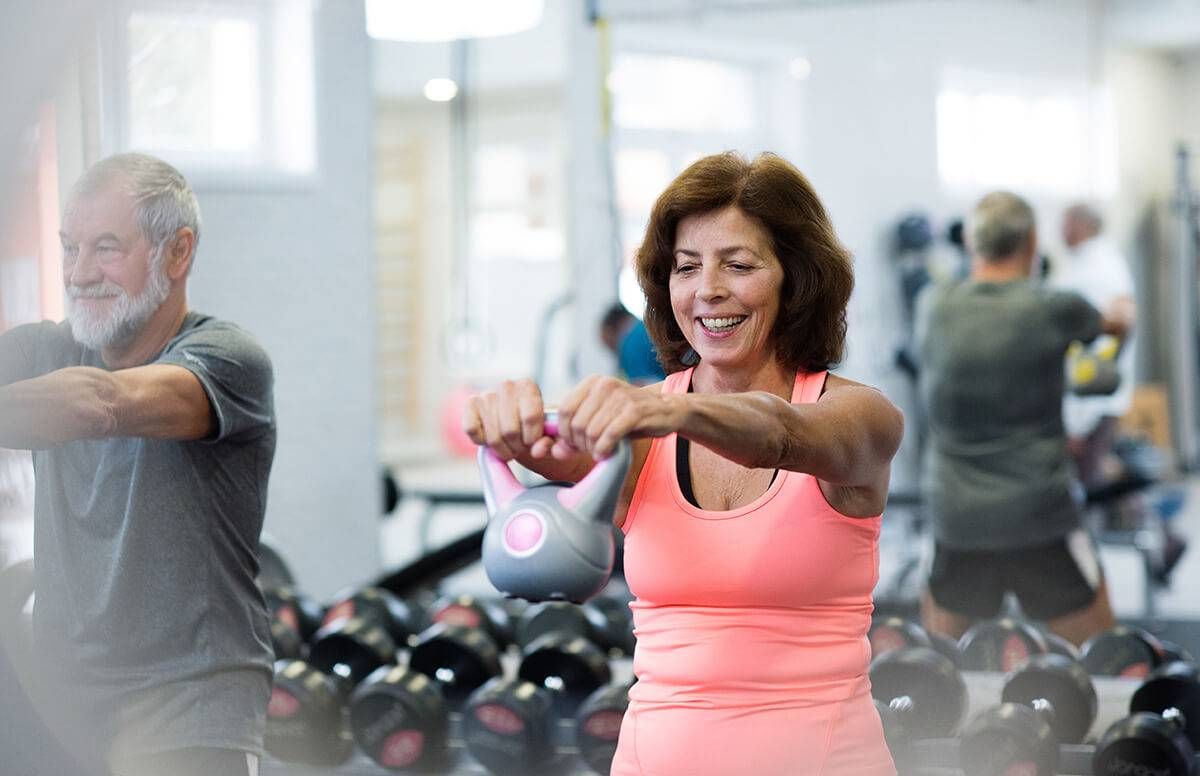Fitness and Exercise Rules That Change After 50
Know what to do to adjust to your body and stay in shape
A funny thing happens on the way to 50 and beyond: Your body doesn't respond to exercise as it did earlier in your life. Fatigue, muscle and joint aches and increased injuries seem to happen with greater frequency.

Unfortunately, it's not your imagination. It happens to the best of us as a natural consequence of aging. In fact, some of the "standard" fitness rules no longer apply, at least not in the same way as they did in your 30s and even 40s. Here's how the rules change after 50 and how to stay injury-free as you age.
Old rule: Stretch a few days a week
New rule: Stretch after every workout, and then some
Stretching is no longer an option after 50. Staying flexible becomes more important as you age, says Michele Olson, adjunct professor of exercise science at Huntingdon College in Montgomery, Ala.
"Flexibility, because it's related to the collagenous tendons, which is a part of our lean body mass, starts to decrease," she says. "Since our tendons connect our muscles to our bones, the perfect time to stretch is after your weight training sessions."
Olson recommends a total body stretch, involving all major muscle groups, a minimum of two to three times a week. This would ideally be done after each workout when muscles are warm.
Old rule: Focus on cardio
New rule: Resistance training takes center stage
Bone density and muscle mass drops rapidly after 50, says Olson, making resistance training a crucial part of a complete exercise program. In addition to the link between muscle mass and metabolism — muscle burns more calories at rest than fat — increasing muscle and bone strength also prevents falls and fractures.
You still need cardio, of course, for reducing heart disease risk, which accelerates after 50, says Olson.
"And, as we increase lean mass — bones and muscle — the war against belly fat must also begin," she says. Plus, a 2014 study shows a single 20-minute bout of weight training may enhance memory. Strive for eight to 12 repetitions per set, two to three times a week. If you can easily perform more than 12 reps, increase the resistance, says Olson.
Old rule: Slow and steady cardio works best
New rule: Use interval training to pump up the fat burn
Going for an easy stroll with a friend may be a good way to get fresh air, but it won't do much for calorie burning, says Olson.
"Continue cardio for its heart health benefits, but focus on intervals since interval training for 30 minutes versus moderate, continuous exercise decreases belly fat," she says. "Moderate, continuous cardio does not."
Interval training involves alternate bouts of higher intensity cardio with "rest" or easier periods. Intervals create an "after burner" effect called EPOC, which stands for "excess post-exercise oxygen consumption." That's a state in which your body continues to burn a higher rate of oxygen and calories after you've finished your workout. How many calories and for how long depends on the intensity of the intervals.
Old rule: Take one day in between each weight training workout
New rule: You may need longer than a day between workouts
Taking a day off in between workouts gives muscles time to recover, but you may need more recovery time after age 50, says Dr. David W. Kruse, a sports medicine specialist with Hoag Orthopedic Institute in Irvine, Calif.
"You need to focus more on recovery after 50. Tissue recovery takes more time and more effort to support that recovery," he says. "The exact amount of time depends on your baseline fitness level."
How do you know when you've had enough rest? "Look at trends," says Kruse. "If you find soreness isn't going away and is impacting your next workout this may indicate early signs of injury or not enough recovery time." Being unable to decrease your time or improve whatever markers you're using to gauge progress may also indicate you need to allow more recovery time, says Kruse.
Old rule: Warming up is an option
New rule: Always include a thorough warm-up
Warming up before a workout increases circulation, raises heart rate and body temperature, prepares muscles for exercise and increases joint range of motion. Warm-ups are particularly beneficial after 50 to mediate some of the changes that occur with aging, mainly decreased tendon elasticity, says Kruse.
"It's best to warm up with a combination of light cardio and light stretching, although the specifics can vary," he says. Although it's best to warm up the specific muscles you're about to use, a general lower body warm-up such as a light treadmill workout will benefit all muscles, including upper body.
"It will benefit you no matter what your workout," says Kruse.

